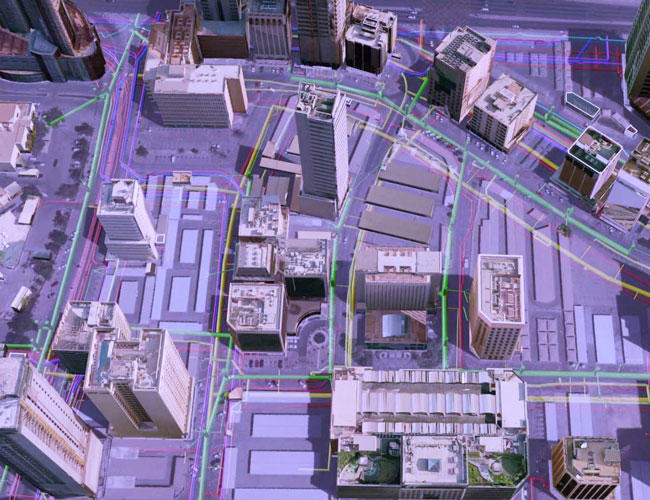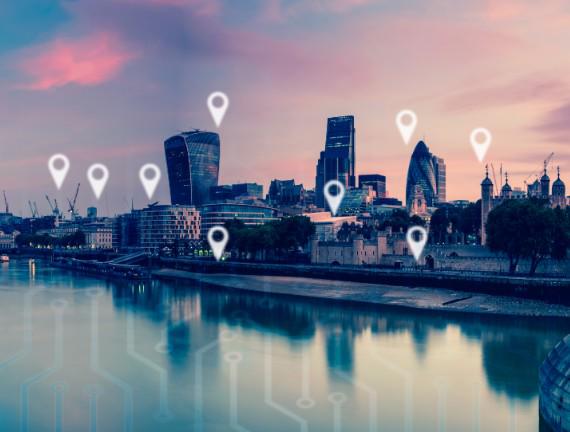There’s never been a better time to assess geospatial readiness
From public apps tracking the spread of Covid-19 to CNN’s interactive US Presidential election map, geographic information has arguably never been more visible.
With social, environmental and economic issues dominating political agendas across the world, governments continuing to respond to the pandemic and the international community counting down to the UN Sustainable Development Goals (SDGs), could it be that in 2021 geospatial will come of age to truly enter the mainstream?
One thing is clear: we need accurate, trusted data to help us make sense of, and address, the many challenges we face, including urbanisation, population growth, migration, climate change and providing for an ageing population.
Speaking at the UN-GGIM Sixth High-Level Forum, George Percivall from the Open Geospatial Consortium neatly summed why geospatial is vital to society, and never more so than in times of international crisis such as Covid-19. “We are enabling people to understand what is happening even though we are locked in our homes,” he said. “Our data not only provides a better understanding of the world but also the risks and challenges that lie ahead.”

Picking up on this theme, Ordnance Survey (OS), Head of International, Juliet Ezechie notes: “Geospatial information helps us to tackle the biggest problems of our time – and capitalise on the greatest opportunities – by making it possible to monitor, measure, predict and adapt effectively. Government spending on geospatial information is a high-impact investment in a nation’s long-term economic health, with benefits 3.2 times larger than the costs. Globally, the economic value of geospatial services is roughly 0.2% of GDP.”
Maximising societal benefits and economic growth by upgrading digital geospatial ecosystems
The Future Trends in Geospatial Information Management: The Five to Ten Year Vision third edition shows how geospatial information and technology underpin national governments, and documents the increasing role that geospatial information will play as part of the 2030 Agenda for Sustainable Development. The report complements the Integrated Geospatial Information Framework (IGIF) by helping to ensure that the Framework integrates and takes advantage of the latest innovation and trends.
It tries to recognise that every nation is starting from a different place, starting with different experiences, different current policy contexts and different levels of geospatial readiness. The use and affordability of technology, as well as analytical methods, have the potential to reduce the geospatial digital divide over the next decade, with discontinuous change creating opportunities for many nations to leapfrog into the future and make rapid progress.
What is geospatial readiness, and how is it assessed?
Geospatial readiness is a term used to describe the level of sophistication that a country has in its use of geospatial information and technology, and the value derived from it. A geospatial readiness assessment helps governments to identify how to upgrade their digital geospatial ecosystem in a way that maximises societal benefits and economic growth. It does this by looking at how they collect, manage and govern data, as well as its quality; how they develop products and services; their corporate governance and stakeholder engagement; their management of the supply chain and operations management; and how they use geospatial technologies.

OS's Geospatial Readiness Assessment is based on a unique model, which has been developed using the organisation’s extensive experience, to support countries to grow their geospatial capabilities.
In Oman, for example, OS undertook a Geospatial Readiness Assessment of the National Survey Authority (NSA) to provide a clear starting point for a modernisation programme to better use geospatial information to underpin decision making. By assessing how the NSA uses and maintains its geospatial data, as well as its data management technology and geospatial information system skillsets, OS produced created a ‘readiness score’.
"Ordnance Survey has provided us with invaluable insight into where to focus our efforts, both geospatially and operationally, to transform the organisation in order to meet the demands of a modern nation," says Director of Geospatial Information, NSA, Saleem bin Abdullah al-Hashmi.
Dubai Municipality is using OS’ Geospatial Readiness Assessment to help realise the Dubai government vision ‘to make Dubai the happiest city on Earth’. The report further grows the Municipality’s leadership status within the Emirate, by providing them with the potential to deliver significant societal, environmental and economic benefits in areas such as urban planning, safety and security, sustainable development and environmental protection – all of which rely on geospatial data.
Director of GIS Centre, Dubai Municipality, Eng Maryam Obaid Almheiri explains:
"The GISC and Ordnance Survey share the same vision of thriving to provide high-value geospatial services to the stakeholders and community. Working with OS, we developed a robust roadmap to target future activities and investments to ensure the GISC meets the requirements of all stakeholders."
CEO of location data information technology consultancy, ConsultingWhere, Andrew Coote recognises that: “Growing new markets and stimulating economic growth is facilitated by better information. But geospatial readiness also benefits communities in ways that are not always easy to quantify.”
He points to wider social, cultural and environmental benefits, such as improving gender equality using the example of establishing land rights many parts of Africa to help women access microfinance to buy seeds and plant new crops.
Having secured World Bank funding, Namibia’s Ministry of Land Reform (MLR) is accelerating sustainable economic growth across the nation by strengthening the way it manages land administration – including land and property usage, title transactions and registration. OS’s feasibility study, funded by KfW Bank, provides the necessary basis for the effective planning of the future land management modernisation programme to help address the pressure on land increases from a rapid move to urbanisation over recent years and recommended a path to ensure the sustainable development of the country. In doing so, it provides the MLR with the information and tasks required to take them to the next stage of their land reform programme.
National digital base maps - fundamental enablers for government services
“Building national digital base maps is a core process in enabling your nation’s digital economy to flourish, but base maps are also a fundamental enabler in providing the most basic of government services, including establishing property ownership, allocating resources and planning infrastructure,” notes Juliet Ezechie.
“Take for example, the first 3D-enabled national spatial data model for the Kingdom of Bahrain we created with the Survey and Land Registration Bureau (SLRB) mapping authority. As part of the ‘National 3D Mapping of Bahrain’ programme, it supports Kingdom-wide data sharing, analysis and decision-making.”
“We also assisted Malta to realise its focus on authoritative, quality-assured geospatial data as a vital component of a modern nation’s infrastructure through MapMalta, a new national data model underpinned by a large-scale detailed topographic base map of the built and unbuilt environment. Created in collaboration with IIC Technologies and BlueSky, it enables effective policy-making, economic growth and the creation of sustainable and safe living communities for citizens.”
OS’s collaboration with the World Bank has delivered practical geospatial training and an assessment of spatial data infrastructure policy in mainland Tanzania and Zanzibar. This work has provided crucial skills development in the areas of data collection and management for various government ministries and data stakeholders. It also strengthened an understanding of the need to build a strong geospatial foundation to support public services.
In Rwanda, OS provided strategic advice to Rwanda Natural Resources Authority (RNRA) which has national-level responsibility for providing geospatial information, including topographic, thematic and geological maps. By detailing strategy and a set of prioritised recommendations and options on next steps, the report supports RNRA in delivering its vision to be at the forefront of sustainable development, economic growth and prosperity of Rwanda through an efficient, transparent and equitable system of land management and land administration. As a result of a clear mapping strategy and framework for geospatial data management, future needs can be identified and planned for, enabling RNRA to develop a viable business and operations model, with potential funding models.
Speaking about the collaboration, Rhona Nyakurama, Land Administration Program Manager for RNRA said: “We hope to learn from OS’s experience of developing and implementing a national location strategy to inform our own approach to strengthening surveying expertise in Rwanda."
Geospatial information as a cross-sector catalyst for growth
The return on investment on assessing and expanding a nation’s geospatial readiness reaches far beyond any cost-benefit analysis. As Andy Coote notes: “In situations where there may be many competing priorities for resource allocation, it is essential that the value of geospatial information is presented in a manner that decision-makers can understand and readily compare to other potential investments.”
Juliet Ezechie concludes: “Investment in geospatial information is an essential component in helping governments to make progress towards all the tenets of the UN’s 2030 Agenda for Sustainable Development and in increasing their income and economic health. Geospatial information is the cross-sector catalyst that enables nations to reach the next level with some economies seeing the growth of up to 1.2% GDP after improving their geospatial Information capabilities.” As geospatial comes of age, there has never been a better time for countries to seize the opportunity to get an honest appraisal of their capabilities, take advantage of the many funding opportunities available and take the next steps in their journey to geospatial readiness.”
How geospatially ready is your nation?
Take our online geospatial readiness assessment to learn your nation’s geospatial health

Director of International